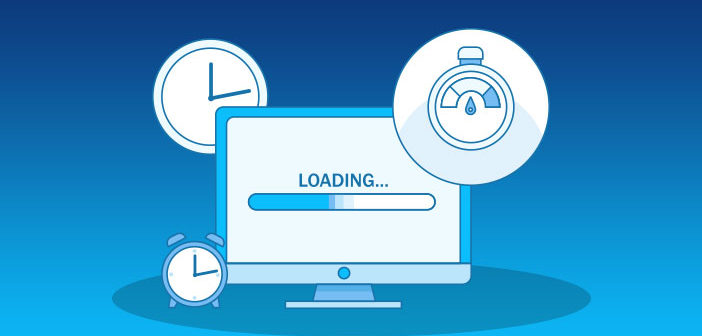Increasing a website’s loading speed is one of the top goals of any site owner. It can dictate how customers respond to your web content, landing pages, and even your call to action. This post is a list of strategies on how we improved the loading speed of our website and how it brought about results.
When we were first starting our addiction website, we wanted to incorporate several scripts and plug-ins to guide potential leads to call us. The continuous update of the plug-ins messed up with some of the scripts within our site, which caused a slower loading speed and even server errors.
Our web developers all understand that a service-related website must have a fast loading speed. When potential customers are only acquainted with your business, you must have a good impression. A slow-loading site is a thumbs down, unfortunately. They might tap on the close button before you even have the opportunity to show them your offers.
Thankfully, we have reversed this problem and it has brought wonderful results. We increased our lead inquiries for as much as 75%, and traffic has improved dramatically as well. If you are a website owner who wishes to improve your loading speed, here are some strategies we would like to share:
Find an efficient web hosting provider.
The major contributor to website speed is your hosting provider. Although it may be cost-efficient for your website to have a shared hosting plan with unlimited bandwidth, this has some drawbacks with your website loading speed. This results to a slower-loading website especially during peak times.
Shared hosting can be problematic for website loading times, as well as keeping your site up 100% of the time. When a server error is determined, you can be sure that your website is down along with the other sites that share the same server. If you are serious about keeping your loading times fast and your website up and running 24/7, you must invest in a cloud hosting service. When we switched our website into a cloud hosting service, our speed improved dramatically. Our website was virtually up to almost 100% of the time as well.
Use a lightweight theme or website format.
Gone are the days where heavily-laden websites with sliders, widgets, and icons are the “in” thing. More and more companies opt for lightweight and easy-to-load formats. This served as a response to people opting to browse in their mobile phones rather than on desktop computers. This translates to people using shared Wi-Fi services, LTE, and other lower-speed internet options. Now, websites must adjust to these changes and find better ways to ramp up their website speed by having minimalist themes.
In the Sunshine Behavioral Health website, we have managed to improve our loading speed by only adding the necessary widgets. These include the Hotjar feedback and call-to-action buttons in our landing pages. The call-to-action buttons are set-up using a script rather than images for faster loading times.
Optimize image sizes.
Another website speed killer are huge image sizes. Unless you are a stock photograph website, you do not need images with hundreds of megabytes per download. Now, there are tools within photograph editing applications that can help you pick the best image size.
Before saving logos, stock photos, or other forms of images for uploads, be sure to find the “web optimized” option. This can help improve the loading speed of the images in your website dramatically without compromising much of the results. High-resolution images may not be necessary for people who are viewing your website on mobile devices or smaller screens.
Reduce the JS and CSS files in your website.
You may notice that if you put your website through Google PageSpeed Insights, a notification will show you that you need to reduce the size of your CSS and JS files. CSS and JS files help in the formatting of your website, but they can slow down its speed especially when there is a code error.
You can perform manual editing of the JS and CSS calls in your website. Alternatively, you may use tools such as Autoptimize to help do this task in a press of a button. Our website is now running with the most essential JS and CSS calls available, and this has helped reduce the loading times spent especially on the landing pages.
Uninstall or deactivate unused plugins.
This may be an often-overlooked process as plugins can pile up as you improve your website over time. However, they can be like trash inside a house–they can leave your website cluttered and difficult to navigate. In fact, some plugins can even cause fatal errors that can cause a website crash.
This happened in our addiction site when we were first starting out. A newsletter plugin was installed but was not used as the main email capture tool. We left it there, and it was the root cause of a website error. By deleting this plugin at our website’s FTP, we were able to reverse the error and slow loading times it caused.
Reduce external scripts.
External scripts may sound useful, but they add an enormous piece of data on your website. If you already have a fast-loading theme in place, it is best to stick to its original format and only add necessary scripts. For example, you may want to have essentials in places such as the Google Analytics Tool or Google Scraper Crawler.
This is essential not only for your loading speed but also for the improvement of your SEO. When search engines such as Google can successfully crawl through your website, it can contribute to helping you rank higher for your target keywords.
Cleanup website database.
Once in a while, it is important for your web developers to clean up your website database. These include minimizing the size of your backup data, deleting spam comments, inactive accounts and unwanted emails. Doing these tasks regularly can help free up your storage space, resulting to faster loading times for your website.
When it comes to websites, speed is the name of the game. By employing these strategies that have been effective in our addiction site, you too will also improve your website loading times.
Author BIO:
Charles Watson is the current head content writer for Sunshine Behavioral Health. He can be found directly on Twitter at @charleswatson00, or at https://www.sunshinebehavioralhealth.com.



